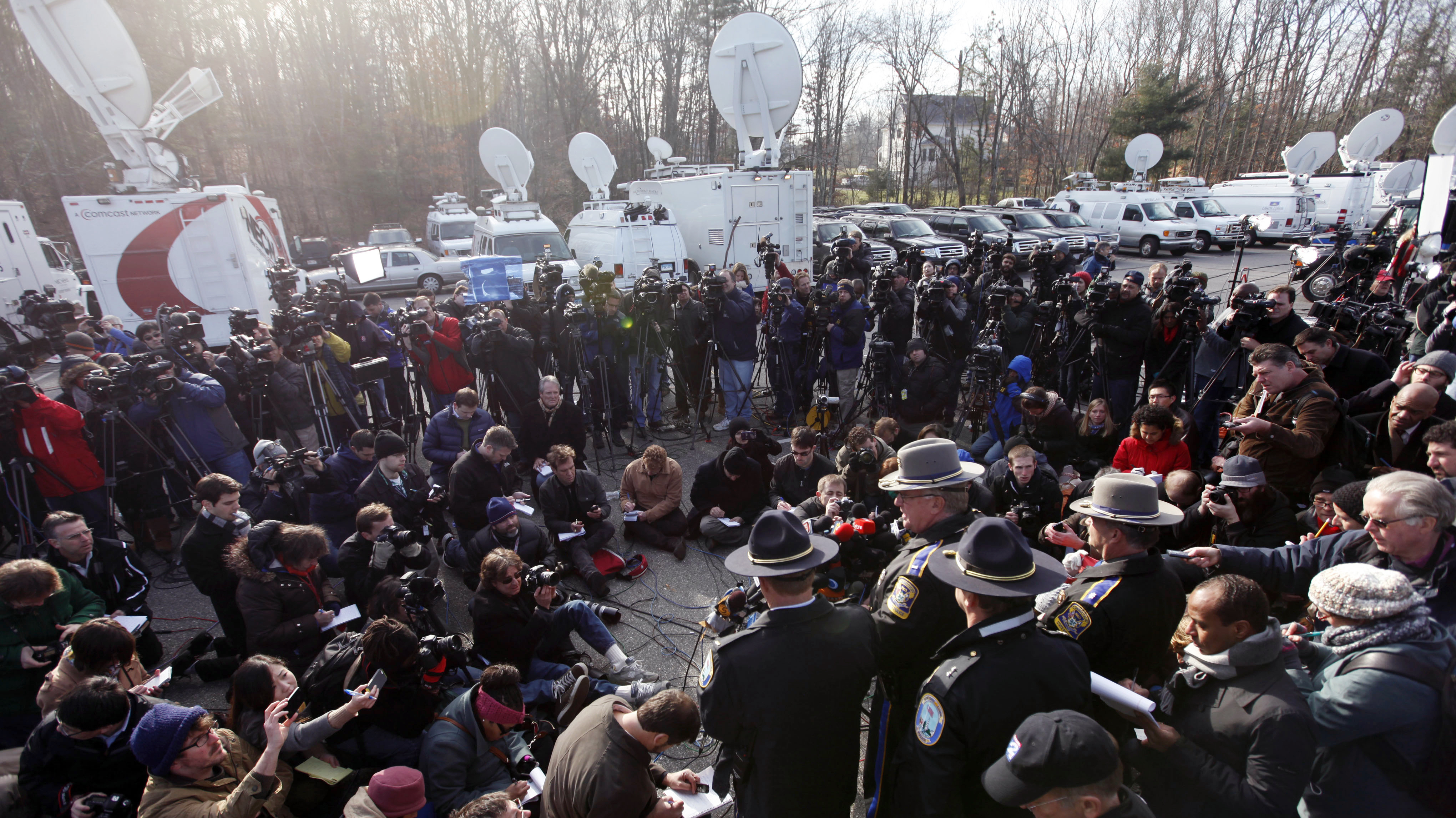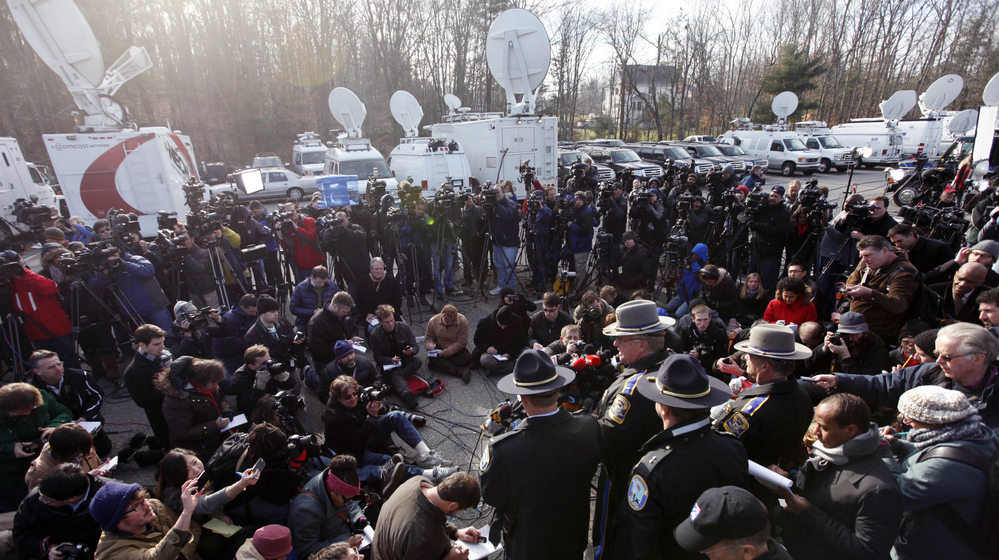Lt. J. Paul Vance of the Connecticut State Police conducts a news briefing Saturday in Newtown, Conn. The strategy for dealing with the wave of news media in Newtown echoes that of some past tragedies, experts say.
Lt. J. Paul Vance of the Connecticut State Police conducts a news briefing Saturday in Newtown, Conn. The strategy for dealing with the wave of news media in Newtown echoes that of some past tragedies, experts say.
Jason DeCrow/APFielding questions from reporters Friday in the first hours after the mass shooting at Sandy Hook Elementary School, Connecticut State Police spokesman Lt. J. Paul Vance made one thing perfectly clear: The news media could consider him the one and only reliable source for information on the tragedy.
It was a message he repeated in the ensuing days. "All information relative to this case is coming from these microphones," Vance said Sunday before a throng of reporters. "Any information coming from other sources cannot be confirmed, and in many cases it's been found as inaccurate."
In setting himself up as the sole source of reliable information, the state police spokesman was following a well-worn script for getting control of a big, growing story, says Steve Davis, who experienced similar challenges as the official liaison to the media covering the 1999 mass shootings at Columbine High School in Colorado.
'Brutally Honest' When Needed
On the day of the Columbine shootings, Davis was on the phone and first realized something was wrong when officers rushed out of the office. Within minutes, he was in a car on his way to the high school, trying to make sense of dozens of early and contradictory reports.
"I know it's hard to imagine now that it could have been any worse, but there were reports that day that we had as many as eight gunmen in the school. Some were [reportedly] hiding in ductwork," remembers Davis, who is now the spokesman for the police department in the Denver suburb of Lakewood.
Davis said he told reporters at Columbine, "Look, let's try to understand that there's going to be a lot of misinformation here. I will try to confirm it and reconfirm it before I give it to you."
But Davis said he also was "brutally honest" when needed. "Sometimes I had to tell them, 'You know what? I do know the answer to your question, but ... I can't release it quite yet.' "
He set up on-the-hour news conferences to keep reporters informed and control the flow of information.
"A big part of each news conference was just rumor control," Davis says. But he took all questions and did his best to get timely answers for reporters, he says.
The briefings served another purpose, he says. They kept the media "physically close, because they always needed to be there in an hour. They didn't have six hours to go around the neighborhood and start digging up stuff."
Denver-based Russell Ruffin, who runs workshops to train law enforcement agencies how to deal with reporters, praises Davis for his handling of the media in the days and weeks after the Columbine shootings.
Ruffin, who is a former news reporter, says law enforcement has to balance the public's right to know against its own need to protect an ongoing investigation.
Davis, like Vance, followed the rule of "speaking with one voice in a crisis," he says. Otherwise, "you have the sheriff out there saying one thing and the city police saying something else."
That's what happened during the Beltway sniper attacks in 2002, when 10 people were killed in several locations in the Washington, D.C., metropolitan area by what turned out to be two gunmen, according to Ruffin.
The primary spokesman in that case was Montgomery County Police Chief Charles Moose. But Ruffin says if a reporter didn't get the answers he or she wanted from Moose, "all you had to do was go over to one of the other jurisdictions and ask 'what are your thoughts on this?' "
He says Moose was probably too free with information during the Beltway sniper investigation. That was in marked contrast to the way the chief dealt with a serial strangler case just three years prior, when Moose was head of the Portland, Ore., police bureau. In the Oregon case, Moose imposed a media blackout.
"It caused all kinds of speculation" in the media, Ruffin says. "Sometimes when you mete out too little information, it just makes rumors run rampant."
Ruffin and Davis agree that spokesman Vance is doing a good job.
New Challenges Since Columbine
Davis' criticisms are reserved for the journalists. He acknowledges that with the arrival of social media, the media landscape has changed since Columbine.
"I don't know what the answer is other than waiting and getting the official word, which is something that nobody seems to want to do," he says.
He says he also doesn't envy Vance. If Columbine was any example, the Connecticut state police spokesman will still be living the Newtown shooting story a long time from now.
After Columbine, Davis says, "for the next year and a half, 95 percent of my work every single day was consumed by that story."




